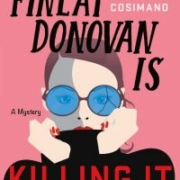Misbelief: What Makes Rational People Believe Irrational Things by Dan Ariely
A few years ago Dan Ariely, Professor of Psychology and Behavioral Economics at Duke University, found himself being compared to Nazi propagandist Joseph Goebbels. He was also named as the “chief consciousness engineer of the Covid-19 fraud” and a leader of the agenda 21 plot. How could this be? These people just didn’t know him so all he needed to do was talk with them and it would be over. Boy was he wrong!
That experience led him to want to understand why and how this could happen. The result is Misbelief: What Makes Rational People Believe Irrational Things.
Misbelief is not a new phenomenon, it’s been around for ages. But it does seem to be increasing and becoming more mainstream. It’s more than just misinformation, it’s a mindset. Ariely defines misbelief “as a distorted lens through which people begin to view the world, reason about the world, and then describe the world to others.”
Getting to misbelief is a process and Ariely likens it to a funnel. You start with a few questions about accepted truths and if you proceed to the end of the funnel, you will dismiss all mainstream sources and embrace alternative truths and conspiracy theories. We are all the opening of the funnel, this book explores why some advance to the end and what factors turn skepticism to mistrust.
The author identifies four elements to the funnel of misbelief. The first is emotional. Stress and the need to manage it play a big role in the journey to misbelief. Not everyday stress but unpredictable stress. Such as the stress of losing employment, the death of a loved one, financial loss, or a pandemic. It can evoke a strong emotional response and feelings of helplessness and loss of control. To combat these feelings you may start looking for someone to blame.
The next element is cognitive. Ariely explores what makes us susceptible to misinformation. We all practice confirmation bias and seek information that supports our beliefs. We also think our minds work differently than they actually do. How does that along with motivated reasoning and the Dunning-Kruger Effect lead someone through the funnel?
The third element considered is personality. What personality traits when combined with other forces make someone more likely to be a misbeliever? Misremembering, seeing patterns, and decision-making biases play a part. And while there is no personality type that misbeliever’s share, if you have a narcissist in your life, don’t ignore their needs.
The final element is social. This one is a powerful motivator as people are social. Those who advance in the funnel of misbelief will usually experience ostracism. When others are made uncomfortable or embarrassed by what someone with a misbelief says they distance themselves. As family and friends turn away, the social needs of the misbeliever are filled by the ones who believe as they do. This draws the misbeliever even farther down the funnel. The social need can overshadow the misbelief as the reason to keep the misbelief.
So what does all this misbelief lead to – mistrust. Mistrust is a serious problem for our society but Ariely says Superman gives him hope. I’ll let him explain why.
I’ve probably made this sound a bit boring and academic but it is not. Ariely’s style is conversational with a little humor and always respectful. His examples opened my eyes to misbeliefs I didn’t know existed. He also provides Hopefully Helpful boxes scattered through the text. These are things we can do to combat some of the actions that can lead to misbelief.
I was eager to read this when I saw this title on our new book shelves. I’ve been very puzzled the last few years how someone who shares the same belief system with another can come to believe something that the other finds completely unbelievable. With Ariely’s help, now I know.
Review written by: Patty Crane, Joplin Public Library Reference Librarian











